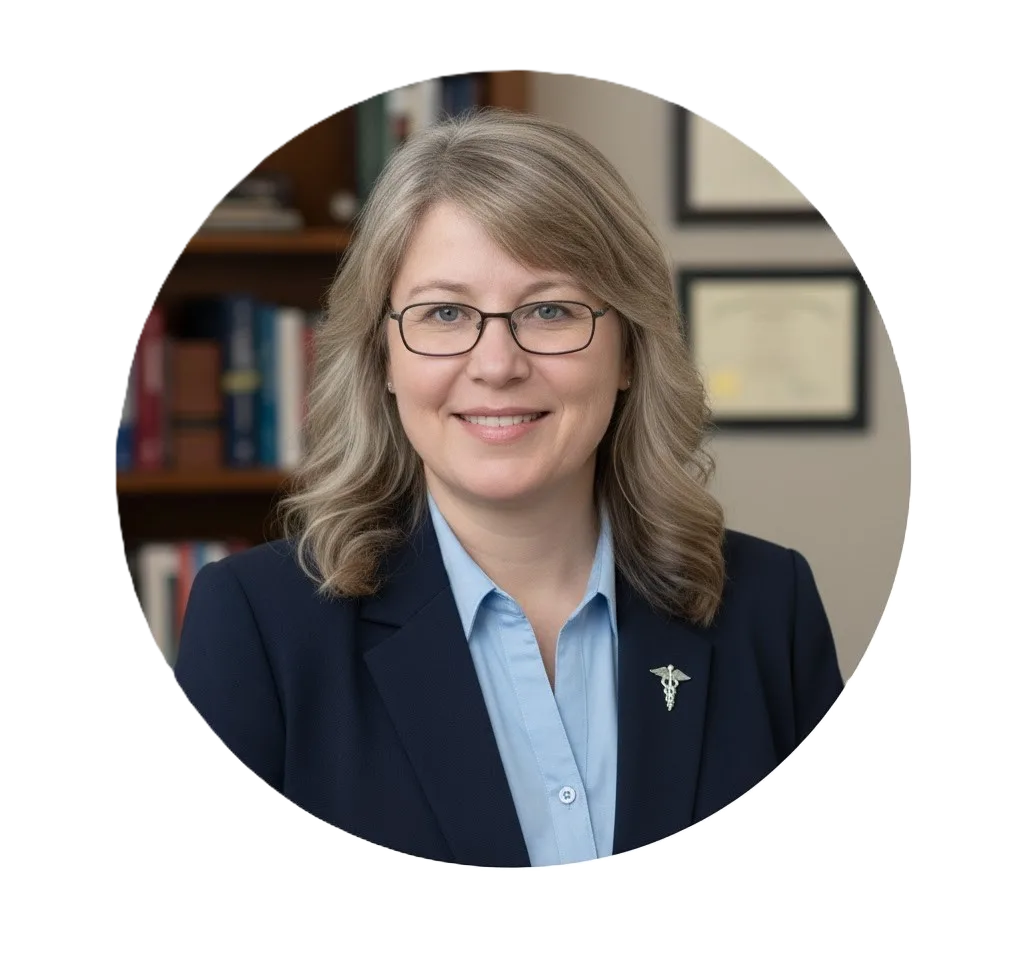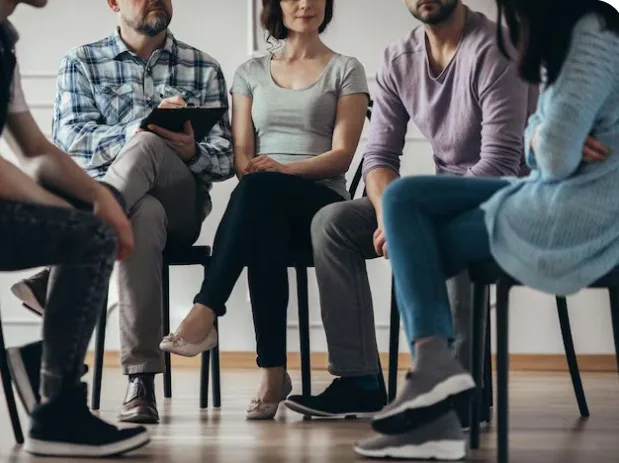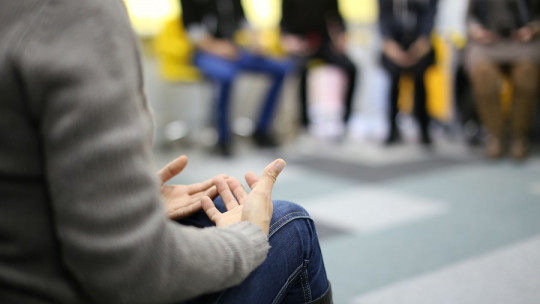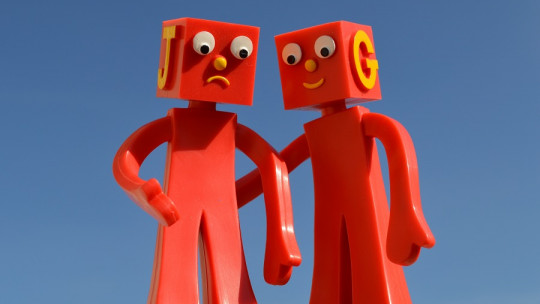You walk into a room and seven strangers are sitting in a circle. A therapist welcomes you, invites you to sit, and suddenly you’re expected to share your deepest struggles with people you’ve never met. The whole setup feels bizarre, even threatening. Why would talking to strangers about your problems help when you can barely talk about them with people you trust?
This is the visceral reaction many people have to the idea of group therapy. It goes against every instinct about vulnerability and privacy. We’re taught to keep our problems to ourselves, to handle things privately, to present a competent face to the world. The thought of exposing your pain, your failures, your darkest thoughts to a room full of people seems like the opposite of healing. It seems like a recipe for humiliation.
Yet group therapy works. Sometimes it works better than individual therapy. Not because there’s something magical about groups, but because humans are fundamentally social creatures whose problems often live in the space between us and others. We develop in relationships, get wounded in relationships, and often heal most effectively in relationships. A group provides something individual therapy can’t: real-time interpersonal dynamics with multiple people offering different perspectives, modeling different ways of being, creating a microcosm of society where you can practice new behaviors in relative safety.
The history of group therapy is fascinating because it emerged from pragmatic necessity more than theoretical insight. Early practitioners weren’t trying to revolutionize psychotherapy—they were trying to help more people with limited resources. A tuberculosis doctor treating too many patients to see individually. Military psychiatrists during wartime overwhelmed by traumatized soldiers. From these practical challenges came insights about how groups themselves could be therapeutic, how the dynamics between members could facilitate healing in ways individual treatment couldn’t replicate.
What started as economic efficiency became a sophisticated therapeutic approach with multiple theoretical frameworks, specific techniques, and proven effectiveness for various conditions. Today, group therapy isn’t a second-best alternative to individual therapy—it’s a distinct modality with unique advantages, used for everything from addiction recovery to social anxiety to trauma processing to general personal growth. Millions of people participate in therapeutic groups annually, and research consistently shows outcomes comparable to or better than individual therapy for many conditions.
What I want to do here is take you through the full landscape of group therapy. Where did it come from and how did it develop into what we know today? What are the different types of groups and how do they differ in purpose and process? What actually happens as a group develops over time, and what makes groups work when they do? Because once you understand the structure and history, the idea of sitting in that circle with strangers starts making a lot more sense.
The Surprising Origins: Tuberculosis Wards and War
Group therapy’s origin story begins not in a prestigious university psychology department but in a tuberculosis sanatorium in Boston in 1905. Dr. Joseph Hersey Pratt, an internist treating TB patients, faced a problem: too many sick people, not enough time to see them all individually. Tuberculosis treatment in that era required long-term rest and careful monitoring, and Pratt’s working-class patients were struggling to follow complex medical regimens. They needed ongoing support and education but individual sessions were impossible given the patient load.
Pratt started gathering patients in groups to teach them about managing their illness. What began as practical medical education unexpectedly became something more—patients started supporting each other, sharing experiences, offering hope and practical advice. The group itself became therapeutic beyond whatever medical information Pratt provided. Patients who’d felt isolated in their illness found community. Those who’d felt hopeless saw others improving and drew encouragement. The shared experience created bonds that facilitated healing in ways Pratt hadn’t anticipated.
Around the same time, other pioneers were experimenting with group approaches. Trigant Burrow, a psychoanalyst working in the 1910s and 1920s, became interested in how groups could reveal social and interpersonal dynamics that individual analysis couldn’t access. Paul Schilder, working at Bellevue Hospital in New York in the 1930s, applied psychoanalytic concepts to group settings, exploring how unconscious processes played out interpersonally.
But the real explosion of group therapy came with World War II. Suddenly military psychiatrists faced overwhelming numbers of traumatized soldiers returning from combat. Individual treatment was impossible—there simply weren’t enough therapists. Necessity forced innovation. British psychiatrist Wilfred Bion, working with shell-shocked soldiers, developed group approaches that became the foundation for modern group psychotherapy. He noticed that groups themselves had dynamics and patterns independent of individual members, that the group became an entity with its own psychology that both revealed and could heal individual wounds.
Post-War Development: The Golden Age of Group Therapy
After World War II, group therapy exploded in popularity and sophistication. Jacob Moreno, who’d been developing psychodrama and sociometry since the 1920s, presented his work to the American Psychiatric Association in 1932 and co-authored early monographs on group psychotherapy. His contribution was recognizing that action and role-playing in groups could access therapeutic material that talk therapy alone couldn’t reach. Through psychodrama, group members could enact conflicts, reverse roles, and work through trauma in embodied ways that purely verbal therapy missed.
Samuel Slavson developed activity group therapy for children in the 1940s, using play and creative activities in group settings. His work showed that groups didn’t need to be primarily verbal—they could use action, art, and play as vehicles for therapeutic process. This expanded who could benefit from group therapy beyond articulate adults to children and populations who struggled with purely talk-based approaches.
The 1960s brought encounter groups and T-groups (training groups), developed by Kurt Lewin, Carl Rogers, and colleagues. These weren’t treatment groups for diagnosable conditions but growth-oriented groups for relatively healthy people wanting deeper self-awareness and interpersonal skills. The encounter group movement, part of the broader humanistic psychology explosion, emphasized authentic emotional expression, confrontation of social facades, and intimate connection. These groups could be intense, even confrontational, pushing participants toward radical honesty and vulnerability.
Irvin Yalom, whose 1970 book “The Theory and Practice of Group Psychotherapy” became the field’s standard text, synthesized decades of practice and research into a coherent theoretical framework. He identified specific therapeutic factors that make groups healing: universality (recognizing you’re not alone), altruism (helping others boosts your own healing), hope (seeing others improve), interpersonal learning (getting feedback about how you affect others), catharsis (emotional release), and cohesiveness (belonging to the group). Yalom’s work transformed group therapy from ad hoc practice into a systematic approach with identifiable mechanisms of change.
Types of Groups: Different Purposes, Different Structures
Not all therapy groups are created equal. The term “group therapy” encompasses wildly different approaches serving different purposes. Understanding these distinctions matters because what works for addiction recovery looks nothing like what works for social skills training or trauma processing.
Psychodynamic groups use psychoanalytic concepts to explore how unconscious processes, past relationships, and intrapsychic conflicts manifest in group interactions. The therapist remains relatively non-directive, allowing the group’s natural dynamics to emerge and then interpreting patterns. Members develop transference relationships not just with the therapist but with each other, recreating family dynamics and past relationships in the here-and-now of group interaction. These groups move slowly, require long-term commitment, and work best for people interested in deep personality change rather than symptom relief.
Interpersonal process groups focus on the here-and-now of how members relate to each other in the room. The group becomes a laboratory for trying new ways of connecting, getting feedback on your interpersonal impact, and working through relationship patterns that create problems in your life. The content of what you discuss matters less than the process of how you’re relating right now. If you habitually avoid conflict, the group notices when you do that. If you interrupt or dominate conversations, others can give you feedback. These real-time corrections create learning that talk about past relationships can’t replicate.
Cognitive-behavioral groups teach specific skills for managing symptoms. These are structured, time-limited, focused on particular problems like anxiety, depression, or anger management. The therapist functions as teacher and coach, presenting techniques, assigning homework, and helping members practice skills in session. These groups are less focused on interpersonal dynamics and more on skill acquisition. Members share their experiences applying techniques and troubleshoot obstacles, but the primary work is learning and practicing specific coping strategies.
Support groups bring together people facing similar challenges—cancer patients, bereaved parents, people with chronic illness. The primary therapeutic factor is universality—you’re not alone, others truly understand what you’re going through. These groups may or may not have professional leadership; peer-led support groups like AA or grief groups function effectively with facilitation from members who’ve been through the experience. The shared identity around the challenge creates instant connection and reduces isolation that comes from feeling like nobody understands.
Psychoeducational groups teach information about conditions, symptoms, and management strategies. These might be single-session or short-term series focused on topics like understanding bipolar disorder, managing diabetes, or parenting strategies. The goal is education more than emotional processing, though members certainly support each other and share experiences. These groups empower participants with knowledge that reduces fear and increases effectiveness in managing their conditions.
How Groups Develop: The Predictable Stages
Groups don’t start fully formed—they evolve through predictable developmental stages, and understanding these stages helps both leaders and members navigate the process effectively. Multiple theorists have proposed stage models, varying from two stages to nine or more, but most share common themes about how groups develop from anxious beginnings to mature working groups.
The initial stage, often called forming or orientation, involves anxiety, uncertainty, and dependence on the leader. Members are figuring out what’s safe to share, what the rules are, whether they can trust these strangers. Everyone’s presenting their best self, testing the waters, looking to the therapist for structure and reassurance. Conversations stay relatively superficial despite the group’s ostensible purpose being deep sharing. This stage can last weeks or months depending on the group’s frequency and members’ defenses. The therapist’s job is creating safety, establishing norms, and modeling the vulnerability they’re asking members to risk.
The second stage, often called storming or conflict, involves rebellion against the leader and conflict between members. The honeymoon’s over. Members get frustrated that the therapist isn’t fixing everything. They challenge group norms. Differences between members become irritants rather than interesting diversity. Some members withdraw or consider quitting, while others fight for dominance or try to rescue the group from its dysfunction. This stage feels terrible while it’s happening but it’s actually progress—members are dropping their performed selves and showing real reactions, creating the raw material for genuine therapeutic work.
The third stage, norming or cohesion, emerges as the group works through conflict and develops genuine connection. Members start trusting each other. They take bigger risks in what they share. The group develops its own culture—inside jokes, shared references, ways of being together that feel unique to this particular collection of people. Cohesion becomes the foundation for therapeutic work because members now care enough about each other to risk vulnerability and to hear difficult feedback without assuming rejection.
The fourth stage, working or performing, is when real therapeutic change happens most intensely. The group functions maturely, able to give and receive feedback, confront each other caringly, support each other through difficult material, and use the interpersonal dynamics therapeutically. Members develop insight about their patterns, practice new behaviors, work through past wounds, and make genuine personality changes. The therapist can step back somewhat as the group largely runs itself, with members taking responsibility for the therapeutic work.
The final stage, termination or mourning, happens when the group ends. This can be planned from the beginning or it happens when members leave ongoing groups. Endings activate feelings about all past losses and separations, making termination itself therapeutically valuable. Groups that end well provide corrective experiences around saying goodbye, expressing appreciation, tolerating sadness about loss while holding gratitude for what was gained. Groups that end poorly—members dropping out without closure, angry departures, unresolved conflicts—can reinforce maladaptive patterns around endings.
What Makes Groups Therapeutic: Yalom’s Factors
Irvin Yalom identified eleven therapeutic factors that explain why groups heal. Not every group activates all factors equally, but successful groups mobilize most of them at various times. Understanding these factors helps both leaders maximize therapeutic potential and members recognize what’s valuable about experiences that might feel confusing or uncomfortable in the moment.
Universality—the recognition that you’re not uniquely broken—provides enormous relief. When you’ve spent years believing your thoughts, feelings, or struggles make you fundamentally different and damaged, hearing others share similar experiences creates profound validation. You’re not crazy, you’re not alone, you’re human. This factor operates powerfully in support groups where shared diagnosis or experience creates instant recognition, but it works in all groups once members risk authenticity.
Altruism—helping others—boosts your own healing in ways that seem paradoxical. When you’re drowning in your own problems, being useful to someone else reminds you that you have value and competence. Offering support, sharing hard-won insights, or just listening deeply to another’s pain takes you outside your self-absorption and reconnects you to your better self. This factor explains why peer support often works as well as professional treatment—helping others is therapeutic for the helper.
Interpersonal learning happens through feedback about your impact on others. In regular life, people rarely tell you honestly how your behavior affects them. In groups, with norms supporting honesty and a therapist facilitating constructive feedback, you can learn what you do that pushes people away, what draws them close, how your blind spots affect relationships. This real-time correction based on actual interaction beats hypothetical discussion about past relationships hands down.
Catharsis—emotional release—provides relief and opens space for new understanding. Holding difficult emotions requires enormous energy. When you finally express grief, rage, shame, or terror you’ve been suppressing, the release itself feels healing even before any insight emerges. Groups provide safe enough containers for catharsis that individual therapy sometimes can’t match because other members’ presence and support makes the expression less frightening.
Open Versus Closed Groups: Structure Matters
A fundamental design choice in group therapy is whether groups are closed (fixed membership throughout the group’s life) or open (members can join and leave at different times). Each structure has distinct advantages and creates different therapeutic dynamics.
Closed groups start together and end together, with no new members added after the first few sessions. This structure allows deep cohesion to develop because everyone’s moving through stages together, developing shared history and trust over time. Members can reference earlier sessions, build on previous work, and develop intimacy that would be harder if newcomers kept joining. Time-limited groups focused on specific issues—a twelve-week anxiety management group, a sixteen-week DBT skills group—usually run closed because the curriculum builds sequentially and newcomers would disrupt the learning progression.
The downside of closed groups is that when members drop out, which inevitably happens, the group shrinks and can lose critical mass. A group designed for ten members might dwindle to four or five, changing the dynamics and potentially triggering feelings of abandonment or failure in remaining members. Closed groups also end, which means members lose the support system just when they’ve become most bonded and therapeutically effective.
Open groups maintain relatively constant size by adding new members as others leave. Long-term therapy groups, support groups, and ongoing process groups typically run open. This structure provides continuity—the group continues indefinitely, offering ongoing support without forced endings. Veterans can help newcomers, creating altruism opportunities, and fresh members bring new energy and perspectives that prevent stagnation.
The challenge with open groups is maintaining cohesion and managing the constant disruption of integration. Every time a new member joins, the group regresses somewhat, returning to earlier developmental stages to incorporate the newcomer and reestablish safety. This can frustrate veterans who resent going backward. Additionally, deep cohesion is harder to achieve when membership constantly shifts, though skilled leadership can create stable culture that persists across membership changes.
Size and Composition: Getting the Mix Right
Group size profoundly affects dynamics and therapeutic potential. Too small and you lose the diversity and interpersonal richness that makes groups valuable. Too large and individual members don’t get enough airtime or attention.
Most therapy groups run between six and twelve members, with seven to nine considered ideal for interpersonal process groups. This range provides enough diversity for different perspectives and relationship dynamics while keeping the group small enough that everyone can participate meaningfully each session. Larger groups require more structured leadership and often break into smaller subgroups for deeper sharing. Smaller groups can work but risk becoming overly intense or collapsing if members drop out.
Composition—who’s in the group—matters enormously. Some groups are homogeneous, bringing together people with similar diagnoses, experiences, or demographics. Cancer survivors, veterans with PTSD, mothers of autistic children—these homogeneous groups maximize universality and shared understanding. Everyone speaks the same language, gets the references, truly understands the challenges. No need to explain or educate—everyone just gets it.
Heterogeneous groups mix different people with different issues and backgrounds. These groups sacrifice some universality but gain interpersonal richness and challenge that homogeneous groups lack. You’re forced to explain yourself, to see your problems from outside your own perspective, to relate to people different from you. This mirrors real life more accurately and builds broader interpersonal skills. The diversity also provides varied role models and perspectives that homogeneous groups can’t offer.
The Therapist’s Role: Leading Without Controlling
Group therapy puts unique demands on therapists that individual work doesn’t. You’re managing not just individual psychologies but group dynamics, interpersonal conflicts, developmental stages, and your own reactions to being the focus of multiple people’s transferences and projections.
The effective group therapist balances multiple roles. You’re creating and maintaining safety—establishing norms, intervening when interactions become destructive, protecting vulnerable members from attack. You’re also promoting risk-taking, pushing the group beyond superficial politeness into authentic engagement that feels unsafe initially. This paradox—simultaneously creating safety and pushing beyond comfort—requires constant calibration.
You’re watching multiple levels simultaneously: what individuals are saying and not saying, how members relate to each other, patterns in the group as a whole, and your own internal reactions that signal group dynamics. It’s like conducting an orchestra while also being an instrument in it, trying to track everything while remaining genuinely present rather than detached and analytical.
Different theoretical orientations position the therapist differently. Psychodynamic leaders remain relatively opaque and non-directive, allowing transference to develop and unconscious processes to emerge. Interpersonal leaders actively engage, point out patterns, and facilitate here-and-now processing. CBT group leaders teach and structure explicitly. Support group leaders may step back more, letting members drive the process.
Common Challenges: What Goes Wrong in Groups
Groups don’t always work smoothly. Certain problems arise predictably, and handling them well separates effective from ineffective group therapy.
The monopolizer dominates conversation, leaving little space for others. This member might be anxious, narcissistic, manic, or just oblivious to social cues. The group resents the monopolizer but rarely confronts them directly, looking to the leader to intervene. The leader must balance protecting the group’s needs with respecting the monopolizer’s legitimate need for attention and helping them develop awareness about their impact.
The silent member attends but rarely speaks, making minimal contribution to group interaction. Some silent members are processing deeply despite not verbalizing much. Others are terrified, defended, or passive-aggressively withholding. The challenge is drawing them out without forcing participation that increases their anxiety, while also addressing how their silence affects group dynamics and robs them of therapeutic benefits.
Scapegoating happens when the group targets one member, projecting their own disowned qualities onto that person and attacking them. The scapegoat might be different, difficult, or actually problematic, but the intensity of group hostility exceeds what the individual’s behavior warrants. The leader must protect the scapegoat while also helping the group examine why they need someone to carry their projected negativity.
Dropouts are common, especially early on when anxiety is high and commitment weak. Members leave for legitimate reasons—scheduling conflicts, moving, deciding group isn’t right for them. But premature dropouts often reflect unmanaged anxiety, shame after sharing too much, or conflict the member couldn’t tolerate. How the group processes departures affects remaining members’ feelings of safety and commitment.
FAQs About Group Therapy
Is group therapy as effective as individual therapy?
Research consistently shows group therapy is as effective as individual therapy for most conditions, and sometimes more effective, particularly for interpersonal problems, social anxiety, and conditions where universality and peer support matter. The cost-effectiveness is substantial—groups serve multiple people simultaneously, making therapy more accessible. However, group therapy isn’t right for everyone or every problem. Severe paranoia, active psychosis, or extreme narcissism can make someone unsuitable for groups. Some issues require individual attention that groups can’t provide. Many people benefit most from combining individual and group therapy, using each modality’s strengths.
What if I’m too anxious to speak in group?
This is probably the most common concern people have about group therapy. The anxiety is real and valid—being vulnerable with strangers is genuinely scary. Good group therapists understand this and create norms where nobody’s forced to share before they’re ready. You can participate by listening and learning from others’ experiences initially. Most people find that as they observe others taking risks and being accepted, their own anxiety decreases and they gradually share more. The group itself becomes a laboratory for managing social anxiety—you’re facing the feared situation (social exposure) in a controlled, supportive environment. Many people find that confronting this fear directly in group is more effective than talking about it hypothetically in individual therapy.
What happens if I say something and everyone judges me?
Groups have norms against judgment that therapists establish and enforce from day one. The rule is you can share your own reactions and experiences, but you don’t evaluate or criticize others’ choices or feelings. What actually happens in well-run groups is the opposite of judgment—you share something you’re convinced is uniquely shameful and multiple people say “Me too” or “I’ve felt that way.” The universality is powerfully healing. Yes, members might disagree with your perspectives or give you feedback about your behavior, but feedback from people who care about you is different from judgment. The therapist monitors interactions to ensure feedback stays constructive and prevents pile-ons or attacks.
How long does group therapy usually last?
This varies enormously by group type. Psychoeducational groups might be single sessions or short series lasting a few weeks. CBT skills groups typically run eight to sixteen weeks. Process groups and interpersonal therapy groups often continue for a year or longer, with some people staying multiple years. Support groups, especially peer-led ones like AA, can continue indefinitely with people attending as long as they find it helpful. Time-limited groups have the advantage of clear endings that motivate work and provide termination experiences. Open-ended groups offer sustained support and the chance to work on issues that require extended time. Your needs and the group’s structure determine appropriate duration.
Can I be in group therapy and individual therapy simultaneously?
Yes, and many therapists recommend this combination. Individual therapy provides space for issues too personal or complex for group, offers consistent one-on-one attention, and helps you process group experiences that trigger strong reactions. Group therapy provides interpersonal learning and feedback individual therapy can’t replicate, plus peer support and universality. When the same therapist provides both modalities, they can integrate the work across settings. When different therapists are involved, communication between them (with your consent) can help coordinate treatment. The combination is particularly powerful for people working on interpersonal patterns—individual therapy to explore origins and meanings, group therapy to practice new behaviors and get real-time feedback.
What if I know someone in the group outside of therapy?
This depends on the nature and closeness of the outside relationship. Most therapy groups explicitly exclude people with significant outside relationships—close friends, family members, romantic partners, coworkers in the same department. These relationships create complications around confidentiality and honest engagement. You can’t speak freely about your friend or family member if they’re sitting in the circle. However, loose acquaintances—people you recognize from around town, distant colleagues, fellow members of large organizations—usually aren’t prohibited. The group establishes norms about how to handle outside encounters (maintaining confidentiality, not discussing group content, respecting boundaries) that make this manageable. If you’re concerned about specific relationships, discuss with the group leader before joining.
What makes someone a bad fit for group therapy?
Certain characteristics make people unsuitable for groups, at least initially. Active substance abuse that impairs judgment and reliability disrupts group process. Severe paranoia makes trusting the group impossible. Sociopathy or extreme narcissism—where someone lacks empathy and exploits others—creates unsafe environments. Current psychosis or extreme cognitive impairment prevents meaningful participation. Intense crisis requiring immediate intensive intervention is better served by individual care initially. These aren’t permanent exclusions—someone might become ready for group after stabilization through medication, individual therapy, or sobriety. The group leader screens potential members to assess readiness and fit, protecting both the individual and existing members from negative experiences.
How is confidentiality maintained in groups?
Confidentiality in groups is more complex than individual therapy because multiple people know your information. Groups establish strict confidentiality norms from day one: what’s said in group stays in group, you don’t identify members to outsiders, you don’t discuss group content outside sessions. The therapist is bound by the same professional confidentiality rules as in individual therapy. However, therapists can’t guarantee that group members will maintain confidentiality because they can’t control what members do outside sessions. In practice, breaches are rare because members respect the vulnerability they’ve all shared and understand that violating confidentiality destroys the safety everyone depends on. Many groups have members sign confidentiality agreements acknowledging this responsibility.
What’s the difference between group therapy and support groups?
Group therapy is led by trained mental health professionals (psychologists, social workers, counselors) who actively facilitate therapeutic process using clinical skills and interventions. Support groups may be professionally led or peer-led, with focus on mutual aid rather than clinical treatment. Group therapy explicitly works toward psychological change—developing insight, changing behaviors, resolving internal conflicts. Support groups primarily offer acceptance, shared understanding, and practical advice from people with lived experience. Group therapy often requires diagnosis and is considered medical treatment. Support groups are open to anyone dealing with the focal issue. Both are valuable, and many people participate in both—group therapy for clinical work, support groups for ongoing peer community. Some groups blur these boundaries, offering peer support with professional facilitation.
Do online groups work as well as in-person groups?
Online groups became much more common during COVID and research is still catching up, but preliminary evidence suggests they can be effective, though with some differences from in-person groups. Video groups capture facial expressions and some body language that phone or text groups miss. Online formats can reduce some barriers—geographic isolation, transportation challenges, childcare needs—making therapy more accessible. However, technical difficulties, privacy concerns in shared living spaces, and reduced nonverbal communication create challenges. The intimacy and intensity that develop in person can be harder to achieve online. Some populations and issues work better online than others. Many people find hybrid models helpful—primarily in-person with occasional online sessions when needed. As technology improves and we gain experience with online formats, best practices continue evolving.
Group therapy works because we’re social creatures whose problems often emerge from and play out in relationships. Talking about relationship patterns in individual therapy provides insight, but actually relating differently in the moment with real people creates change that intellectual understanding alone can’t achieve. The group becomes a laboratory where you can try new ways of being, fail safely, get feedback, try again, and gradually develop capacities that were stuck.
The history of group therapy—from tuberculosis wards to traumatized soldiers to encounter groups to modern evidence-based practice—shows how clinical innovation often emerges from practical necessity and then reveals deeper truths about human psychology. What started as economic efficiency evolved into recognition that groups themselves have healing properties that individual treatment lacks. The between-people space, the shared vulnerability, the collective witness to each other’s struggles and growth—these create therapeutic opportunities unavailable in one-on-one work.
Different types of groups serve different needs. Process groups for deep personality work. Skills groups for symptom management. Support groups for shared experience and ongoing community. No single type is universally superior—what matters is matching the group format to your needs and readiness. Someone in crisis needing immediate coping skills benefits more from structured CBT groups. Someone wanting to understand and change long-standing relationship patterns needs interpersonal process groups. Someone dealing with unique challenges that peers understand better than professionals needs support groups.
Groups develop through predictable stages—from anxious beginnings through conflict to mature working relationships and eventually termination. Recognizing these stages helps you stick with the process through difficult phases rather than dropping out when things get uncomfortable, which is often right before breakthrough happens. The storming stage feels terrible but moving through it creates the cohesion that makes real work possible.
If you’re considering group therapy, the anxiety you feel is normal and actually evidence that you understand what’s at stake—genuine vulnerability with strangers is scary. But that fear is often the threshold to significant growth. Most people who push through initial anxiety and stay long enough to connect with the group report that it becomes one of the most powerful experiences of their lives. Not because groups are magic, but because they provide what we actually need as social mammals: genuine connection, honest feedback, shared struggle, and collective healing that reminds us we’re not alone in this messy, beautiful, difficult experience of being human.














